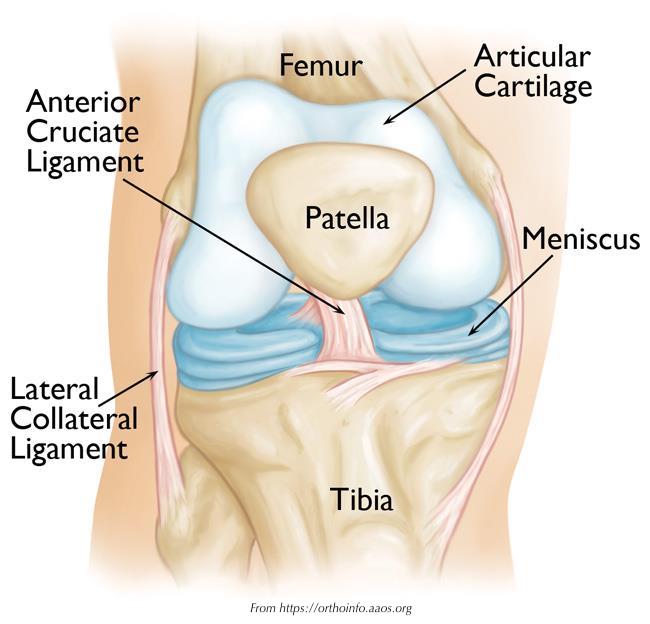KNEE Injuries
Knee Anatomy
The knee is a complex hinge joint that incorporates both gliding and rolling motion which are essential to its normal movement. It is enclosed in a capsule or joint lining. The knee allows motion of the femur (thighbone) with the tibia (shin bone).
The stability of the knee is enhanced by the complex arrangement of four main ligaments (tough bands of connective tissue), the anterior and posterior cruciate ligaments within the knee joint as well as the (medial and lateral) ligaments on either side of the knee on the outside. The cruciate ligaments are “crucial” for the front to back stability and the collateral ligaments provide stability during side-to-side motion.
Within the joint, between the thigh and shin bones, there are two C-shaped pieces of (cartilage) tissue, each called a meniscus. These act as shock absorbers and provide stability to the knee by spreading the weight of the body across the whole surface of the knee joint. Movement of the thigh and shin bones against each other causes friction. To reduce this friction, the ends of the two bones are covered in a white smooth, shiny layer called articular cartilage (or bearing surface cartilage).

